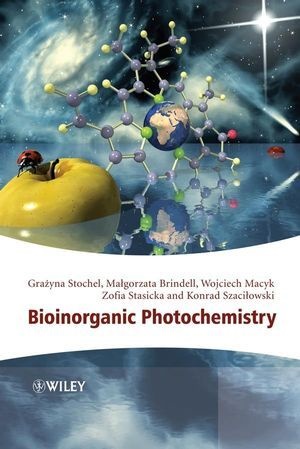Read more
Informationen zum Autor Dr Grazyna Stochel, Deputy Dean, Faculty of Chemistry, Jagiellonian University, Cracow, Poland Klappentext Bioinorganic photochemistry is a rapidly evolving field integrating inorganic photochemistry with biological, medical and environmental sciences. The interactions of light with inorganic species in natural systems, and the applications in artificial systems of medical or environmental importance, form the basis of this challenging inter-disciplinary research area.Bioinorganic Photochemistry provides a comprehensive overview of the concepts and reactions fundamental to the field, illustrating important applications in biological, medical and environmental sciences.Topics covered include:* Cosmic and environmental photochemistry* Photochemistry of biologically relevant nanoassemblies* Molecular aspects of photosynthesis* Photoinduced electron transfer in biosystems* Modern therapeutic strategies in photomedicineThe book concludes with an outlook for the future of environmental protection, discussing emerging techniques in the field of pollution abatement, and the potential for bioinorganic photochemistry as a pathway to developing cheap, environmentally friendly sources of energy.Written as an authoritative guide for researchers involved in the development of bioinorganic photochemical processes, Bioinorganic Photochemistry is also accessible to scientists new to the field, and will be a key reference source for advanced courses in inorganic, and bioinorganic chemistry. Zusammenfassung Bioinorganic photochemistry seeks to understand the interaction of these enzymes and proteins with light, and represents a significant challenge to chemists in many areas. Inhaltsverzeichnis Part I. Introduction 1. Philosophy of bioinorganic photochemistry Part II. Fundamentals 2. Light and matter 2.1. Nature of light 2.2. Accessible light sources 2.3. Interaction between light and matter 3. Formation and properties of electronic excited states 3.1. Wave mechanics and quantum numbers 3.2. Electronic excitation 4. Photophysical deactivation of electronic excited states 4.1. Spontaneous deactivation 4.2. Quenching 4.3. Coordination and organometallic compounds 5. Kinetics of the excited-state decay 6. Photochemical reactions 6.1.Photochemical reaction channels 6.2. Intramolecular photoreactions 6.3. Intermolecular photoreactions 6.4. The coordination compound specificity 6.5. Photosensitization 6.6. Homogeneous photocatalysis 7. Photochemistry and photophysics of supramolecular systems and nanoassemblies 7.1. From molecules through clusters to crystals 7.2. Metallic nanoparticles: metals in the embryonic state 7.3. Formation and decay of the excited states of semiconductors Part III. Natural photoprocesses involving inorganic compounds 8. From interstellar space to planetary atmospheres 8.1. Homogeneous systems: From interstellar space to planetary atmospheres and primitive soup models 8.2. Heterogeneous photochemistry in ice phases 9. Solar radiation and terrestrial environment 9.1. Solar radiation 9.2. Atmospheric photochemistry 9.3. Photochemistry in hydrosphere and lithosphere 9.4. Photochemical self-cleaning in the environment 10. Heretogeneous (photo)catalysis and biogenesis on Earth 10.1. (Photo)catalysis on chalcogenide semiconductors 10.2. Photocatalytic nitrogen fixation 10.3. Photocatalytic carbon dioxide fixation 10.4. "Fossils" of prebiotic catalysts: metal clusters in active centres of metalloenzymes 11. Foundation and evolution of photosynthesis 11.1. Photosynthetic str...

